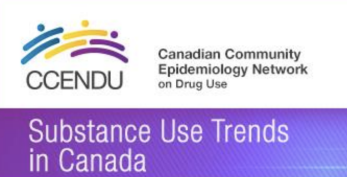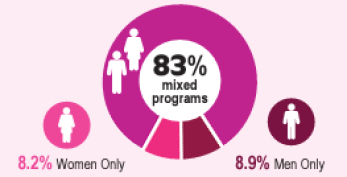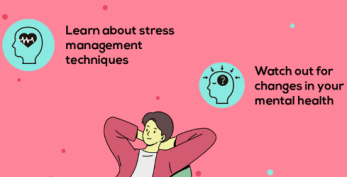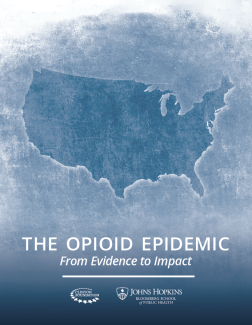Search
Treatment
Applying interventions designed to reduce and manage the symptoms of substance use disorders.
Identifying and Treating Patients Who Use Tobacco
'Million Hearts' is an initiative launched by the U.S. Department of Health and Human Services that aims to prevent 1 million heart attacks and strokes by promoting evidence-based intervention through communities, health systems, non-profit...
Keeping Youth Drug Free
Keeping Youth Drug Free is a new publication from the Substance Abuse and Mental Health Services Administration (SAMHSA). Aimed at parents, the guide offers advice for keeping children substance-free. It includes a review of the latest...
Changes in Specific Substance Involvement Scores among SBIRT Recipients in an HIV Primary Care Setting
Abstract
Background
Substance use is common among people living with HIV (PLHIV) and is associated with worse outcomes along the HIV care continuum. One potentially effective clinic-based approach to addressing unhealthy substance use is...
Effectiveness Bank Matrix Cell: The Face of Drug Addiction Treatment
At the front line the practitioner is to the patient the face of addiction treatment. Key research shows they can matter enormously - not so much in their formal qualifications, but in their manner with the patients. Other times it seems a...
Delivery of Screening and Brief Intervention for Unhealthy Alcohol Use in an Urban Academic Federally Qualified Health Center
Abstract
Background
Screening and brief intervention (SBI) for unhealthy drinking has not been widely implemented in primary care partly due to reliance on physicians to perform it.
Methods
We implemented a model of nursing staff...
Gambling Activates the Same Brain Pathways as Substance Addiction, New Study Finds
Problem gambling in the UK is reported to affect around 590,000 people.
The condition can be treated via a range of approaches, including cognitive behavioural therapy and medication.
Published in the journal Translational Psychiatry, a...
Effectiveness Bank Matrix Bite: What Is Drug Addiction Treatment for?
The first matrix cell on treatment (as opposed to harm reduction) seems a good time to ask: What is treatment there to do? ‘Cure’ addiction, or promote meaningful and productive lives? Meet patients’ wishes, or aid the government’s welfare...
Effectiveness Bank Drug Treatment Matrix Row 1. First Task: Save Lives, Reduce Harm
Consolidates the lessons of the first five instalments of the online course on drug treatment research. The five cells in row 1 explored key research on reducing harm to the user as a result of their drug use. Prompted by HIV, from the...
Exercise in the Treatment of Youth Substance Use Disorders: Review and Recommendations
SUMMARY
Substance use disorders are one of the most common and debilitating mental health conditions experienced by youth, and several well-established risk factors exist that contribute to the development and persistence of SUDs...
WHO Alcohol Brief Intervention Training Manual for Primary Care (2017)
Alcohol contributes significantly to the disease and mortality burden in the WHO European Region, and primary health care systems play an important role in reducing the impact of harmful alcohol use. Screening and brief interventions (SBIs)...
How to Adapt Existing Evidence-Based Clinical Practice Guidelines
Abstract
Objective: To develop and encourage the adoption of clinical practice guidelines (CPGs) for smoking cessation in Canada by engaging stakeholders in the adaptation of existing high-quality CPGs using principles of the ADAPTE...
Do Creative Arts Therapies Reduce Substance Misuse? A Systematic Review
Abstract
The complexities of substance misuse treatment indicate a need to consider the efficacy of creative arts therapies for those who find it difficult to verbalise their emotions and feelings. The focus of this systematic review is to...
Factors Influencing the Long-Term Sustainment of Quality Improvements Made in Addiction Treatment Facilities
Abstract
Background
A greater understanding of the factors that influence long-term sustainment of quality improvement (QI) initiatives is needed to promote organizational ability to sustain QI practices over time, help improve future...
Role of Nurses in Alcohol and Drug Treatment Services
This resource describes the many potential roles of nurses in alcohol and drug treatment in England to help commissioners and providers of specialist adult alcohol and drug treatment services to recruit the right workforce to meet local...
Effects of Naltrexone on Alcohol Self-Administration and Craving
Abstract
Randomized clinical trials have established the efficacy of naltrexone for reducing quantity of alcohol consumption and incidence of relapse to heavy drinking. To evaluate putative treatment mechanisms, human laboratory studies...
Addiction Training in Clinical Psychology: Does It Meet the Demand?
Clinical psychology is particularly well suited to offering a multifaceted response in order to help those living with a substance use disorder. A new study published in the academic journal American Psychologist investigates the extent to...
Effectiveness Bank Drug Treatment Matrix: Creating a Lifesaving Treatment and Harm Reduction System
Online course moves on to the whole-system level, where treatment and harm reduction services working in synergy are the best hope for reversing the hepatitis C epidemic - but can any feasible local or national system succeed in this...
Engagement within a Mobile Phone-Based Smoking Cessation Intervention for Adolescents
ABSTRACT
Background: Although mobile phone-delivered smoking cessation programs are a promising way to promote smoking cessation among adolescents, little is known about how adolescents might actually use them.
Objective: The aim of this...
Novel Vaccines against Morphine Heroin
SUMMARY
Drug addiction is one of the most important health problems worldwide. This pathology results in the death of about 500,000 individuals annually around the globe. Despite this scenario, the development of effective drug therapies...
The Opioid Epidemic: From Evidence to Impact
EXECUTIVE SUMMARY
While prescription opioids serve an invaluable role for the treatment of cancer pain and pain at the end of life, their overuse for acute and chronic non-cancer pain as well as the increasing availability of heroin and...
Share the Knowledge: ISSUP members can post in the Knowledge Share – Sign in or become a member









